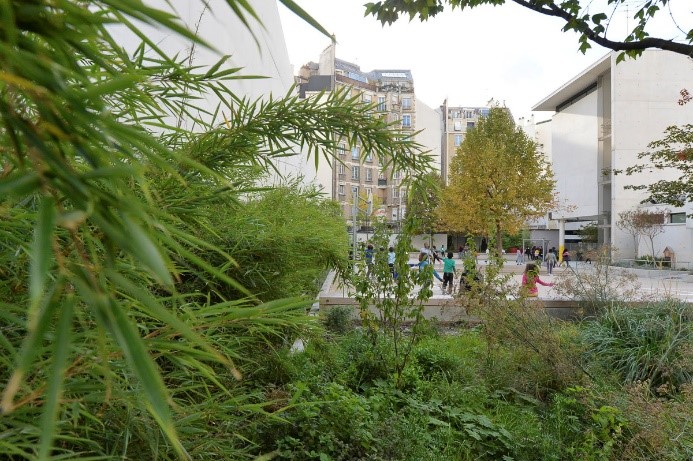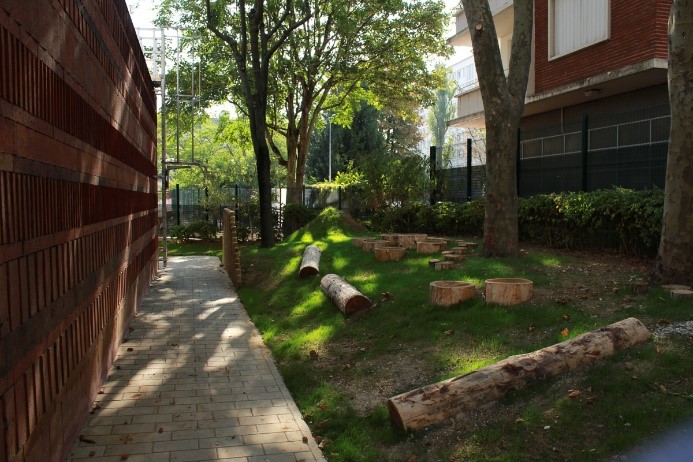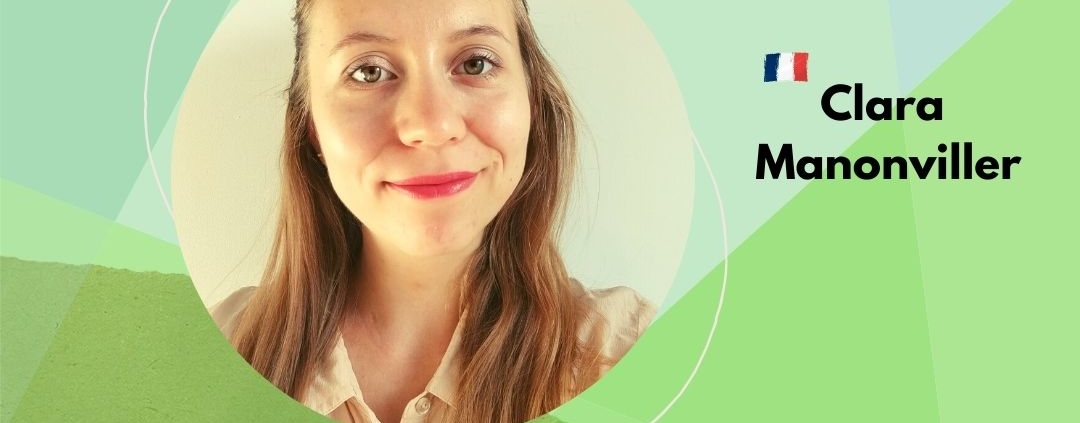The sustainable city: Franco-Russian responses to a global challenge – Clara Manonviller

Until 2020, big cities were seen as territories where the future of humanity lies. And indeed, “since 2007, more than half the world’s population has been living in cities, and that share is projected to rise to 60% by 2030 [1]”.

It was without counting on COVID-19. The pandemic tarnished our perception of big cities: they look a lot less appealing when shops, bars and restaurants are closed and tourists are gone – which has been the case of most of them for almost one year. Moreover, the pandemic highlighted the severe territorial inequalities the megacities rest upon by striking poor neighborhoods more than affluent ones [2]. It also showed the harmful impact of living in a polluted area and having low access to green spaces. Indeed, big cities are the world’s greatest consumers and polluters: they “occupy just 3% of the Earth’s land, but account for 60-80% of energy consumption and 75% of carbon emissions [3]”.
However, by having us take a good look at the harsh realities of the cities, the pandemic and climate crisis also push us to re-think their organization. More broadly, it leads us to question our mindset in order to move towards a model of resilient urban planning, i.e., a model allowing territories to find a sustainable development path and to adapt to climate change.
This is why urban planners, sociologists and geographers have been trying to answer these questions: What will Post-COVID cities look like? How to build a city that is both inclusive and adapted to climate change?
I will add another one: How to take advantage of today’s global challenges in urban planning to boost Franco-Russian cooperation?
In the next lines, we will try to answer these questions by analyzing what a sustainable city is and what it should look like.
What is a sustainable city?
Cities – be they big or small –, haven’t said their last word. On the contrary, they are at the center of innovative policies. Sustainable urban planning is at the core of numerous international institutions’ initiatives, be it the United Nations, the World Trade Organization, or the European Union: for example, the latter implemented the URBACT program in order to create a network of cities interested in building common solutions to achieve sustainable integrated development [4]. Furthermore, every year, the European Green Capital Award rewards a city that achieves high environmental standards and is committed to deepening its sustainable development and environmental policy [5].
How to make a city sustainable?
Well, not only by planting trees.
Making a city sustainable actually requires a holistic approach, i.e., to consider territories as a whole and to develop solutions that impulse a virtuous circle for the entire territory. Thus, more and more cities, regardless of their size, are making mitigation and adaptation to climate change a priority through policies that combine greening, polycentrism, circular economy and energy efficiency – to name just a few.
What is the best way to achieve these goals?
The frugal city, a model that is anything but ascetic
Jean Haëntjens, an economist and urban planner, advocates that the city of the future must be frugal, which means that we should do more with the least. To handle global environmental, social and economic challenges, urban planning should henceforth combine a high quality of life with a regulation of the real estate prices; a need for space with sparing land management; the need to move with energy sobriety; and territorial equity with polarization of economic activities.
This can be reached with a mix of technical, urban planning and political actions: spreading the use of electric cars and installing solar panels on rooftops is not enough. It should go hand in hand with a reflection on the cities’ layout, sensibilization to the environment and citizen participation in the planning process [6].
The 15-minute city

Center/Periphery model vs. Polycentric model [7]
A relevant way to implement this is to switch from a monocentric to a polycentric urban model: there shouldn’t be only one hyper-center leading the cities, but several centers equally distributed across the territory and well connected both between each other and to the primary center. This would allow to achieve energy sobriety, territorial equity and polarization of economic activities: everyone would have access to basic services without walking more than 15 minutes; less energy would be generated by transportation; all the districts would have at least one economic center.  The Grand Paris Express project is meant to achieve this goal: the extension of the public transportation system throughout the Paris region should allow to develop several economic centers and to rebalance the economic development of the suburbs with inner-Paris. [8]
The Grand Paris Express project is meant to achieve this goal: the extension of the public transportation system throughout the Paris region should allow to develop several economic centers and to rebalance the economic development of the suburbs with inner-Paris. [8]
At first sight, the frugal city can seem like a turnkey solution: it is not. There is no “frugal city template”. On the contrary, this concept needs to be adapted to each local reality. To end up, a frugal city does not mean the absolute rejection of high-tech solutions, but the quest for a balanced trade-off between technology and nature-based solutions [9] [10].
The sustainable city, a French & Russian quest?
In both French and Russian cities, innovative solutions are being implemented and they can provide inspiration to each other.
To start with, both Paris and Moscow are facing major environmental challenges, such as air pollution, heat waves, and the prevalence of cars.
Still, they both have made significant improvements towards the achievement of the Sustainable Development Goals and keep on deepening the importance of sustainable development in their public policies, which is reflected in large-scale operations. On the one hand, Anne Hidalgo, the mayor of Paris, wages a battle against cars through pedestrianization and expansion of cycle lanes (+121 km in 2019). She also focuses her attention on greening in order to support local biodiversity and fight urban heat island effect: more and more planning projects undertaken in Paris are integrating greening into their agenda.


The greening of Parisian schoolyards allows fighting the urban heat island effect. [11]
On the other hand, her Muscovite counterpart Sergey Sobyanin introduced paid parkings, electrified the bus networks and extended the public transportation system (+87 metro stations and +58 train stations), reducing air pollution and improving the connection between the city center and the periphery. Besides, he took advantage of Moscow’s large dimension to renovate and create green spaces. One of his greatest achievements is the creation of Zaryadye park, in the city center, which reconstitutes the main ecosystems of Russia. He also renovated Gorky park and VDNKh.

Zaryadye park’s 4 ecosystems at the heart of Moscow [12]
Grenoble & Kazan, or how medium-sized cities became pioneers of sustainable development
Contrary to what one might think, innovation is not the privilege of capital cities. Here is the proof: Grenoble and Kazan, both “secondary cities”, proved to be resilient: Grenoble won the European Green Capital Award 2022 and Kazan’s Lebyazhy park won the Eurasian Park Awards at the World Urban Parks Forum in 2019 [13].
What makes Grenoble & Kazan successful?
Grenoble and Kazan are very different from each other, be it for the topography, population and climate, but they have in common to be both dynamic economic centers and to implement innovative solutions to adapt to climate change.
Grenoble was able to turn its vulnerabilities into assets. Indeed, the city surrounded by high mountains and located at the confluence of the Drac and Isère rivers is highly exposed to floods, heatwaves and extreme cold, and its urban sprawl possibilities are limited. Thus, the city was compelled to implement green densification, eco-neighborhoods and incentives to improve the quality of life of its citizens. The results are astonishing: the city reduced its GHG emissions by 25% between 2005 and 2016 [14]. Moreover, the Flaubert eco-neighborhood won a national award, the city developed vertical greening, encourages its staff to use alternative modes of transport by providing incentives such as reimbursement of 50% of bike rental costs and of 100% of car-sharing service subscriptions, and it provides citizens with advice and subsidies for greening roofs and facades.

The Flaubert eco-neighborhood in Grenoble was co-built with citizens and won a national eco-neighborhood award. [15]

In Kazan, citizens are more and more involved in urban planning [16]
But all these actions wouldn’t have been efficient without the countless citizen participation initiatives implemented by the local elected representatives. And this is where Kazan meets Grenoble. In Grenoble, the “Let’s transform our streets into gardens” program incites citizens to contribute to the city greening by providing those who want to with free public spaces [17]; the framework of the “Cool to go challenge” allows inhabitants to identify the coolest route from one point to another on an interactive map [18]. In Kazan, several public spaces planning projects were co-designed with various stakeholders: Gorkinsko-Ometyevski forest, Uritski park, Akademic Parin street square and the brand-new project of a 12-park network along the Kazanka river. The latter project will become a protected area where it is planned to develop ecotourism and ecological start-ups [19].

The Kazanka River development strategy aims at creating a network of 12 parks that would allow 500,000 people to have access to green spaces in less than a 15-minute walk.
To make a long story short, no matter if you are in France or Russia, comprehensive exchanges between citizens and local authorities are a key issue to implement effective sustainable development policies.
What future for the Franco-Russian sustainable city?
Climate crisis and pandemic provide us with the opportunity to reshape urban planning conceptions in order to make cities more sustainable, resilient and inclusive. This is why climate change is an appropriate gateway to deepen Franco-Russian cooperation in urban planning. Indeed, Franco-Russian cooperation in this field has been growing for several years: the “Métropole du Grand Paris” and “Novaya Moskva” (New Moscow) signed a cooperation agreement in 2019 to solve common challenges related to the digital sphere and transportation [20], French architects such as Jean-Michel Wilmotte, Antoine Grumbach and Edouard Moreau designed planning projects for Russian cities: Wilmotte and Grumbach designed a development project for Moscow [21], Edouard Moreau designed the 12-parks networks for Kazan and a renovation project for the city center of the Siberian city Omsk [22]. However, Franco-Russian cooperation in urban planning remains rather sporadic.
Why not deepen it through town-twinning programs? Indeed, 14 French and Russian cities are linked by such agreements [23]. Moreover, 2021 will be the year of Franco-Russian decentralized cooperation, which aims at renewing French and Russian citizens’ perception of each other’s country [24]. Diplomatic relations between our countries being quite strained, this year can be beneficial both to France and Russia. As we saw it all throughout this article, developing cities in a sustainable way requires thorough knowledge on multidisciplinary issues, and international cooperation helps to bring the missing pieces. This is the case of the French NGO “Urbanistes du Monde” that gathers urban planners from both Northern and Southern countries who want to collaborate and design together innovative solutions to make cities more sustainable both in their native country and abroad [25]. Thus, the Franco-Russian year of decentralized cooperation can lead to the creation and implementation of joint solutions in sustainable urban planning. But that is not all: this year can also improve our knowledge of the variety of each other’s country, allowing French and Russian citizens to take a new look at each other.
By Clara Manonviller (France)
Clara is a graduating student in Urban planning and an environmental research officer at the City of Paris. After a bachelor’s degree in Russian language and international relations, she specialized in Sustainable Development because she is convinced that international cooperation is the key to solve global environmental issues. She is also a participant in the Franco-Russian Dialogue on Climate Change.
Citations
[1] https://www.un.org/sustainabledevelopment/cities/
[2] https://www.lesechos.fr/idees-debats/cercle/opinion-reconfigurer-nos-villes-post-covid-1238843
[3] https://www.un.org/sustainabledevelopment/cities/
[4] https://urbact.eu/urbact-glance
[5] https://ec.europa.eu/environment/europeangreencapital/about-the-award/
[6] https://doc.agam.org/doc_num.php?explnum_id=3220
[7] https://agence-cohesion-territoires.gouv.fr/sites/default/files/2020-09/En%20D%C3%A9tail%20synth%C3%A8se%20Petites%20centralit%C3%A9s%20internet.pdf
[8] https://www.leparisien.fr/grand-paris/tout-ce-que-le-grand-paris-va-changer-pour-vous-12-02-2018-7555857.php
[9] https://th3.fr/imagesThemes/docs/la_ville_frugale_GC_LL_FMB.pdf?PHPSESSID=b4r57vuttinplqu4cnk1hit3s3
[10] https://innovapresse.com/urbain/projets-urbains/38050-ville-de-demain-ville-frugale.html
[11] https://www.paris.fr/pages/les-cours-oasis-7389
[12] https://www.sostav.ru/publication/innovatsionnyj-park-zaryade-otkrylsya-v-moskve-28226.html
[13] https://realty.interfax.ru/ru/events/articles/111090/
[14] file:///C:/Users/clara/Downloads/Diagnostic-territorial.pdf page 74
[15] https://www.grenoble.fr/302-flaubert.htm
[16] http://8architects.com/whiteflowers
[17] https://www.grenoble.fr/1052-jardinons-nos-rues.htm
[18] https://ec.europa.eu/environment/europeangreencapital/wp-content/uploads/2020/05/EGCA_2022_Synopsis_Technical_Assessment_Report.pdf
[19] https://www.business-gazeta.ru/article/478430
[20] https://www.metropolegrandparis.fr/fr/signature-dun-programme-de-cooperation-entre-la-metropole-du-grand-paris-et-le-grand-moscou-298
[21] https://www.lefigaro.fr/culture/2012/09/07/03004-20120907ARTFIG00453-deux-architectes-francais-pour-repenser-moscou.php
[22] https://www.lecourrierderussie.com/societe/2015/07/siberie-urbaniste-francais-omsk/
[23] https://fr.wikipedia.org/wiki/Jumelages_franco-russes
[24] https://cites-unies-france.org/MEAE-DAECT-COMMUNIQUE-Annee-de-la-cooperation-decentralisee-franco-russe
[25] https://urbanistesdumonde.com/fr/ong/qui-sommes-nous



 YEE aims to unite environmental youth non-profit organisations in Europe in order to enhance international cooperation, increase knowledge about the climate crisis, raise awareness of environmental problems and to strengthen participation of youth in environmental decision-making.
YEE aims to unite environmental youth non-profit organisations in Europe in order to enhance international cooperation, increase knowledge about the climate crisis, raise awareness of environmental problems and to strengthen participation of youth in environmental decision-making.




Leave a Reply
Want to join the discussion?Feel free to contribute!